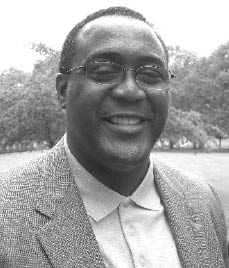Johnathan Holyfield Olmstead Conservancy
by Buck Quigley

The Olmsted Conservancy’s Johnathan Holifield talked about efforts to restore city parks after the October storm:
Artvoice: What’s been going on with the parks since the storm?
Johnathan Holifield: As far as what I would call the urban landscape, which obviously includes our urban forest and issues of reforestation, we are optimistic that this community is mature enough to understand the devastation suffered by the parks and the rest of Buffalo’s urban landscape will require long-term commitment and substantial public and private investment.
An outstanding indication of that level of investment is our partnership with HSBC with the Olmstead ReLeaf. We are substantially on our way and will be able to match the HSBC challenge grant for $50,000.
AV: How is the park system cleanup going?
JH: The parks are ever improving. We have made tremendous progress and this is an opportunity again to say thank you to the many hordes of volunteers who came out to help the Conservancy remove debris from the parkland.
Where we tend to have to be a bit patient is in the inland area of the parks. As you know, weatherwise, we haven’t experienced a long-term freezing, so it’s difficult to drive heavy equipment on the turf without causing even more damage—or to drag that weighty debris to the ring road [in Delaware Park] so that the trucks may scoop it up. So in some cases we’re still in a bit of a holding pattern waiting for the next freeze so we can get into the inlands of the parks to finish up the debris removal.
AV: Presumably a number of trees have had to been removed completely?
JH: Right, and we’re looking at about a hundred so far that are just—that need to be removed immediately. But then there are substantial numbers that just might not make it. We’ll do our best to salvage as many as possible. And many more that will make it but they require labor-intensive treatment—nurturing and pruning and trimming and so forth—so you’re talking about a lot of labor here.
AV: Of the trees that will have to be removed, has there been any thought to what species will be used to replace them, or is that too far ahead to consider?
JH: It’s not too far ahead to begin thinking about it, but what I can say is those decisions have not yet been made. They’ll be made over the course of time and we’ll bring together our best experts, both on staff and with our partners in the community, to make the best planning decisions for the Olmsted system.
|
Issue Navigation> Issue Index > v6n2: Return to the City of Trees (1/11/07) > City of Trees > Johnathan Holyfield Olmstead Conservancy This Week's Issue • Artvoice Daily • Artvoice TV • Events Calendar • Classifieds |









 Current Issue
Current Issue